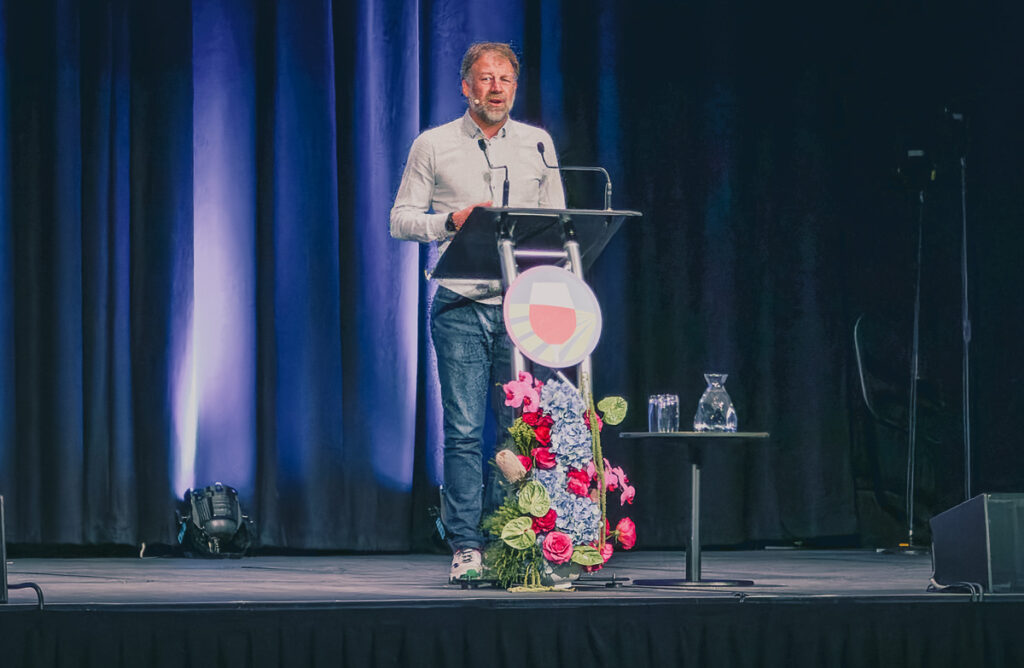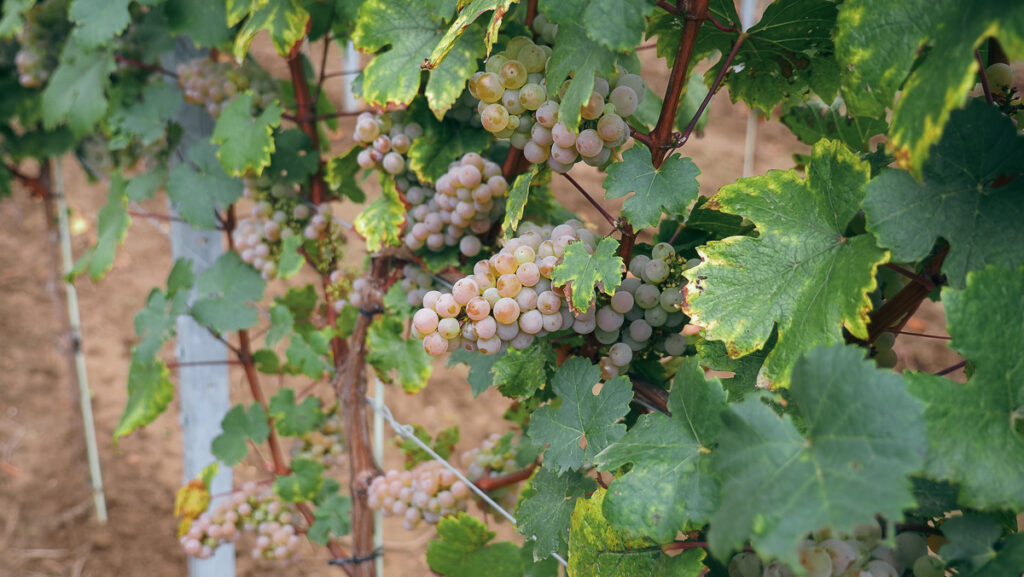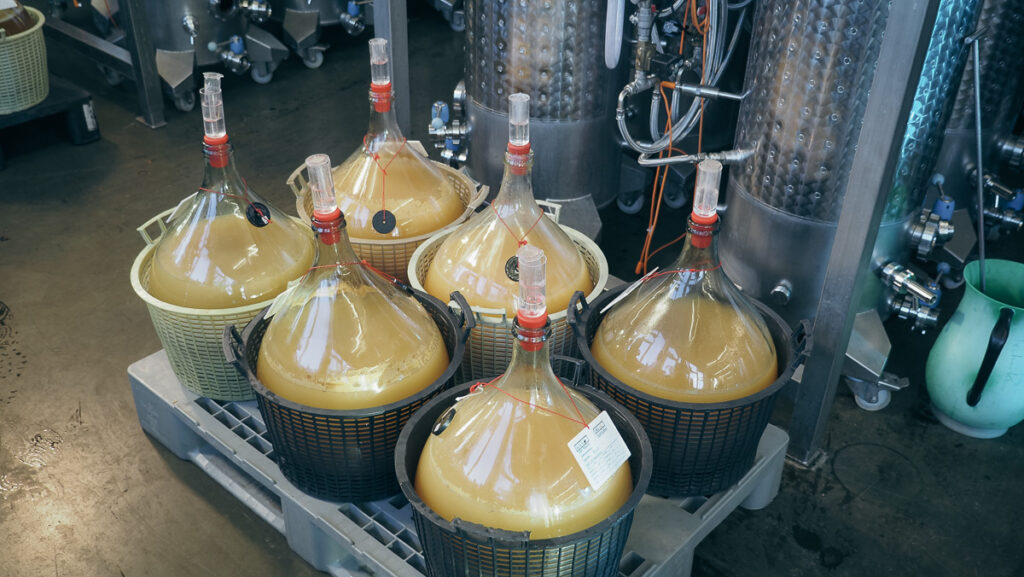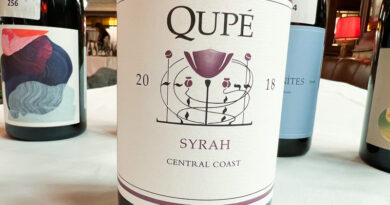Prospects for disease-resistant varieties in Marlborough and elsewhere: will we soon see Cloudy Bay Sauvignon made from a PIWI?
Jim White from Cloudy Bay presented at the 2025 Australian Wine Industry Technical Conference on the topic of disease-resistant grape varieties (DRVs).
Also known widely as PIWIs, the subject of DRVs has become a hot topic in Europe and has just started to get attention in Australia and New Zealand. ‘There are huge advantages for sustainability,’ says White. ‘This could be the largest paradigm shift in the wine industry. I think there is going to be a big change coming.’

The need for these varieties comes from the fact that since powdery and downy mildew were introduced to Europe from the USA in the late 19th century, and from here spread to the rest of the world, Vitis vinifera varieties have needed regular spraying with pesticide to keep them disease free.
Even though careful farming can help make vines more resistant to disease generally, Vitis vinifera hasn’t got the required resistance (R) genes that protect other species of Vitis in north America and Asia that grew up and coevolved with those diseases. In resistant varieties with the right R genes the course of the disease is blocked when the plant recognizes the pathogen.

White outlined four potential methods of plant improvement to improve resistance to these diseases.
The first is cross-breeding, which is what has happened to create the DRVs, with Vitis vinifera crossed with American or Asian species who have the natural resistance. This takes around 25 years before a new variety is released. The resulting vines are known as hybrids, because they are the result of fusing the genetics of two different species.
Then there is mutation breeding, where a stress is applied to meristems of plants and this causes some mutation, creating different phenotypes. Many of the changes are not interesting, but if enough mutants are made, some of them might have interesting properties. The Bragato Institute’s Sauvignon 2.0 program in Marlborough, New Zealand, uses this approach, and they have just planted 6000 clones in a field for further evaluation. It will take around 8 years to come up with new clones for planting out in vineyards. But it won’t result in fully disease resistant plants.
Transgenics, using genetic modification, is another route, and it’s certainly within reach. The idea is to take the R genes from the American and Asian varieties, and then combine them into the genome of your chosen variety. Then you test to see whether the genes are actually being read (in most cases they won’t). It’s not simple to do, but the Australians have led the field in this activity and have completed it successfully. But none of these genetically modified vines have been planted in vineyards, and the work has stopped. This would allow us to keep existing varieties and for each variety of choice would take around 8-10 years to complete. But society isn’t ready for this.
Genome editing is the latest option. Susceptibility genes could be targeted using CRISP-Cas9 technology and taken out, and this might well work to stop the infection process in its tracks. It would take 5-7 years to complete and experiments are underway. Italy has already planted some trial vines, but they were removed by protestors. This is not considered as genetic modification in Australia, north America and the UK, but it is in NZ and Europe. This may change.
Back to the hybrid breeding approach. The goal of current breeding programs is to cross a preferred variety of Vitis vinifera with a disease resistant variety that has R genes conferring resistance to both downy and powdery mildew. These are the Rpv genes (for downy) and the Ren and Run genes (for powdery). Moden genetic methods mean that you can check to see whether the progeny, grown from seed, carry the required resistance genes. If they do, they can be back-crossed again with elite Vitis vinifera varieties to increase the amount of Vitis vinifera parentage, checking once again for the required resistance genes. After a couple of rounds of this, then it’s time to plant the vines grown from seed in vineyard trial blocks. Each will be different, so now it’s time to select for various traits.
The goals? One is to stack resistance genes, so you have more than one for each disease, which stops the pathogen becoming resistant to the plant’s defences. This is an evolutionary war!
Good agronomic performance is another goal: you want the vine to grow well, have an appropriate yield, have nice open bunches to reduce botrytis risk, and to show appropriate bud break time and cycle length. You don’t want it to ripen in the middle of summer, or be susceptible to drought or sunburn.
And of course good organoleptic characters are required: you want the resulting wine to taste nice, and ideally similar to the elite variety used in breeding.

While these varieties will show resistance, there is still a need to spray at early flowering and closer to fruit set, to reduce the chance of resistance developing in the pathogens, and also to deal with any issues that the sprays were masking.
The history of making hybrids between Vitis vinifera and American/Asian varieties began with rootstock breeding in the late 19th and early 20th century in response to phylloxera. While the intention was to breed varieties resistant to phylloxera, they turned out to be largely disease-resistant, too, because of the American parentage. Initially the idea was that these were to be hybrid direct producers, and it was only later that the solution for phylloxera was grafting onto these vines. This was the first generation of disease-resistant vines.
But these French-American hybrids didn’t make very nice wine. However, they grew in popularity because they were so easy to grow compared with Vitis vinifera, and they yielded well. After all, the requirement at the time was for volume of wine, not high quality. Interestingly, up to WW2 there were 400 000 hectares of these in France. But later they were banned, although there are still some hybrids grown in France for Cognac production.
The next generation of DRVs were the crosses that were released in Germany in the 1970s and 1980s, Regent is an example, and this has been very successful. There were also some hybrids that were crossed in eastern Europe during the communist era.
Then France and Italy started working on DRVs, and they have been leading the way for the introduction of these new varieties in more recent years.
In Europe, the Italians have 8-10 000 hectares planted in the seven DOCs where they are allowed. Germany has lots of plantings. The authorization of Voltis in the Champagne AOC was a real step forward. It has the next 10 years or so to prove itself but heralds the acceptance of these varieties into the mainstream.
White then talked about his experiences at Vivai Cooperativa Rauscedo (VCR) (https://www.vivairauscedo.com/en/) in Italy, which is the world’s biggest vine nursery with an extensive DRV breeding program. Last year they made 90 million grafted vines in Italy, and 1 million of these vines were DRVs.
In Australia, CSIRO has been breeding grapevines, and in the early 2000s shifted its focus to growing DRVs. The first generation only had single copies of the disease-resistant genes, but now they are starting to stack resistance genes in their work in producing the second-generation resistant varieties.
But the most promising direction seems to be to bring in the established DRV varieties from Europe. Imports are underway by ARM, Chalmers and Yalumba nurseries in Australia and in New Zealand Riversun has imported 15 DRVs, which will be released at the end of next year. White things that Sauvignon Nepis is the most exciting of these, and is planning to work with it.
This brings up the question of labelling. In Italy, it’s common to see the resistant varieties named after a famous variety, as in the case of Sauvignon Nepis. In France, co-opting the famous variety in the DRV is not allowed. I can see that the French don’t want to confuse consumers. But the lack of familiarity of the name will count against these varieties in the marketplace.
If White is suitably impressed by the performance of the DRVs, then don’t be surprised if we have a Cloudy Bay Sauvignon on the market in a few years made from a disease-resistant variety that performs similarly to Sauvignon Blanc but which is much more environmentally friendly to produce.




